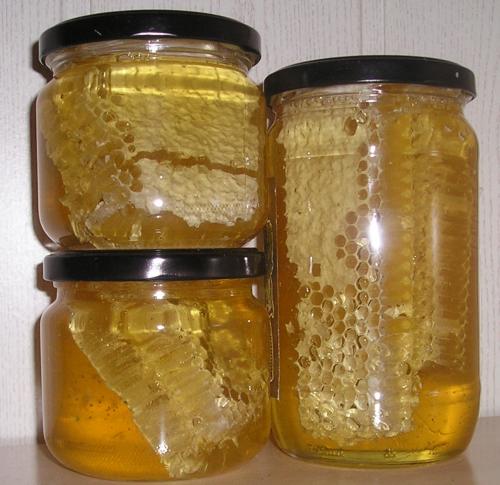
Honey - medicine or fungus-feeder?
Half the quantity, twice the quality. That is an adage repeated throughout the chapters on food in Grow Youthful. Small quantities of high quality nutrient-dense food will extend your life, provide excellent health, and provide a feeling of satiation (feeling full). Of course, such foods are also the most yummy.
Honey is a sweet thick liquid made by honey bees from the nectar of flowers. The bees transform the flower nectar in a process that involves regurgitation and evaporation. As the bees make the honey, they store it in wax honeycombs inside the beehive. Honey is the bee's food.
Honey is a great natural sweetener with about the same sweetness as sucrose (granulated sugar). However, honey possesses a variety of nutritional benefits that refined sugar does not. With a medicinal history that dates back millennia to ancient Egypt, honey is used to treat and prevent a wide variety of health conditions.
Honey is collected from wild bee colonies or domesticated beehives. The honeycomb is carefully removed from the hives, and the best honey drips out of these combs with no further processing other than being filtered through a cloth or sieve. In large-scale commercial production honey is heated, and unfortunately the heating destroys honey's beneficial enzymes.

Flavours of honey vary based on the nectar source, and various types and grades of honey are available. The best comes with the honeycomb.
Honey contains a variety of vitamins, minerals, and antioxidants including riboflavin, niacin, vitamin B12, vitamin C, calcium, magnesium, potassium, and phosphorus. Raw and unprocessed honey also contains several enzymes. It has antibacterial properties that make it useful for treating a variety of skin infections, the common cold, sore throat from bacteria, acne and eye infections. When a small amount of raw honey is consumed several times each week, it helps prevent diseases caused by ongoing bacterial infections, including heart disease and some inflammatory diseases.
When I was living in a shared house in India two decades ago, some of the previous residents had left half-empty jars of honey in the 'fridge. I had a sweet tooth, and found it hard to resist a dessertspoon of honey whenever I was in the kitchen. These jars had probably been sitting in the refrigerator for months, and had mostly crystallised.
I was eating quite sensibly whilst in India - a mostly vegetarian diet, lots of fresh vegetables, little sugar or refined flour, some fruit, and occasional fish or chicken. The weather was hot and steamy, just before the monsoon. It was at that time that I got the worst fungal infection on my feet ever. I remember sitting in my room, peeling off the blisters of skin around my toes, with other large sheets of skin pulled off the sides and bottom of my feet. After leaving India, fungal nail infections developed. My toenails went brown and thick and distorted.
To grow and proliferate, foot fungi need to be fed. And their favourite food is sugar.
Every body needs a variety of different types of sugars. The secret is to have that sugar hit only once a day - NOT for an extended period every day. But I had a craving for honey and overindulged. There was something about honey, in large quantities, that specially seemed to feed my fungal infection. Of course, other sugar sources can also be the cause of a fungal infection - sugars used in so many foods, sugars from refined grains and starches, sweet drinks and foods, fruit juices, and too much fruit.
The other thing I did that promoted the fungal infection and established it deeply in my feet was picking the skin. Tearing away the loose skin is the perfect way of spreading and establishing the infection. As with any kind of infection (bacterial, fungal) don't pick it.
In small quantities, perhaps one quarter to a teaspoon per day, honey is a great food. Get the best possible honey, and ensure that it is raw. Most cheap honey is heated or pasteurised, which makes it easier to remove from the hives, process and filter. Heating destroys all the beautiful, health-giving enzymes in it. Honey provides some types of sugars that your body only needs in very small quantities, along with enzymes and other nutrients. It has anti-bacterial and anti-fungal properties, and helps your body fight fungal infections. But above a certain dose, it changes completely.
Honey is also a natural antibiotic, and is an excellent treatment for many skin ailments. Honey and cinnamon together are also a powerful traditional remedy.
